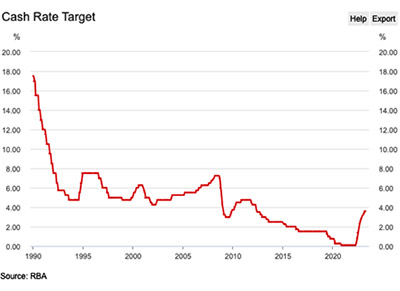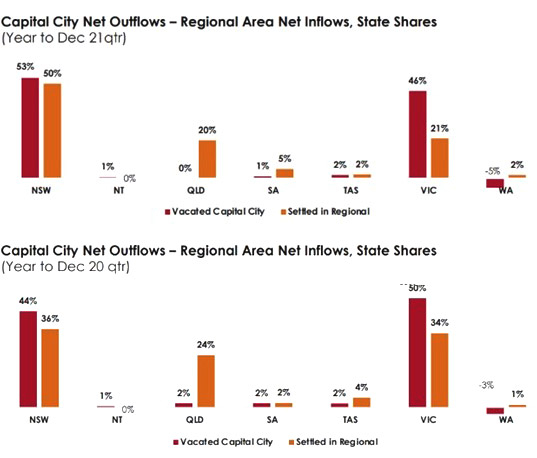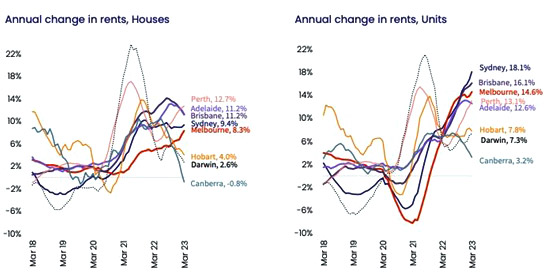Pressure mounts on regional real estate as cities bounce back
The outlook for regional property markets appears subdued as the post-Covid return of sea- and tree-changers to capital cities cools demand.
Now that Covid lockdowns are largely a painful memory, cities are again poised to outperform the regions’ property markets.
Aside from workers returning to the office, the nation’s capital cities are shining bright once again, events are drawing crowds and, with the gloss back, the appeal for urban purchasers has returned.
While many regional markets remain desirable and feasible locations for city-based workers to operate from, some price pressure in coastal and holiday locations appears inevitable as bosses continue to command workers back to the office.
The growth seen in the past two years in the regional centres has passed.
Holiday and remote coastal locations remain the biggest concern for those seeking capital growth in the short term.
The regions sustained particularly strong growth during the pandemic as many people fled the cities to adopt the tree-change/sea-change lifestyle. For some, it was to escape the lockdowns, while for others it was merely the quest for greener living and more space during a time when germs were dominating the headlines.
Aside from Covid lockdowns though, people’s appetite to purchase in regional locations were fuelled by three other significant drivers:
- A replacement for holidays while borders were closed (international and interstate)
- The quest to gain extra space for study/work from home
- Record low interest rates enabling higher borrowing capacity and easier cashflows than in previous years.
In 2019, Australians spent $65 billion on overseas holidays. The border closures were unprecedented outside of war times.
When Aussies had their travel plans curtailed, many households subsequently accumulated significant savings in direct response to discretionary spending limitations.
Many decided to purchase regional holiday homes during this time.

The quest for extra internal house space contributed to this demand also. For those who couldn’t borrow ample funds for a city purchase, the regions represented a more affordable option.
For some cities, Melbourne in particular, the work from home phenomenon felt like it would remain forever. The permanency of a regional move didn’t seem to faze many who happily embraced the change.
The key driver, however, for all this growth was record low interest rates.
Australia’s cash rate sat at a mere 0.1 per cent for 18 months, fuelling one of the strongest real estate market runs in decades.
The heady days of multiple offers on properties for sale, single-figure days on market and soaring prices are over.
Regional property advantages have faded
The impact of population change on a smaller city versus a large city is compelling.
This chart below highlights internal migration during the two lockdown years in Australia. In particular, the eastern seaboard states demonstrated an enormous shift.

Source: Regional Australia Institute.
A thousand people leaving a capital city won’t feel like a significant change for that city, but a thousand people arriving in a regional city will represent an enormous change.
A thousand people leaving Melbourne would represent a tiny 0.02 per cent attrition rate, yet a thousand new arrivals in Ballarat would generate 1 per cent growth.
Many smaller cities struggled with this extreme demand to supply ratio and this was evident across both the private sale and rental markets.
Now that COVID lockdowns are behind us, three out of these four growth drivers are no longer applicable, and even the work-from-home phenomenon is now in question for many employees.
Bosses are requesting people return to work, even in a hybrid fashion and the long commutes are not appealing.
At the start of the year, the Brisbane, Melbourne and Sydney markets had already shown negative growth, however, taking Melbourne as a key example, the only segment to exhibit any positive growth was the CBD, with 6.5 per cent for 12-month value growth.
This swing back to the capitals has had a widespread impact on the rental pool also, especially within the apartment market, with Melbourne unit rental growth exceeding historical rates of change.
Sydney and Brisbane unit rental growth is even higher than Melbourne’s, measuring a whopping 18.1 per cent and 16.1 per cent respectively.

Source: CoreLogic




















